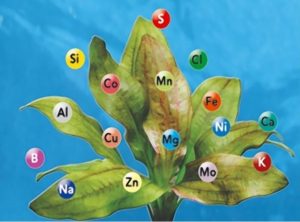
Let’s talk about the use in our gardens and orchards excellent organic fertilizer — manure. What is good? And the fact that it contains a storehouse of vital substances for plants: nitrogen, phosphorus, potassium, calcium, magnesium, cobalt, iron, molybdenum and so on. Manure is a product of vital activity of farm animals, it contains active microflora (a set of living microorganisms) — food and energy source for soil microflora.
It significantly improves the physiological quality of the soil, reduces the harmful effects of herbicides, reduces the acidity of the soil and neutralizes the harmful effects on the soil of excess salts.
The composition of manure and its quality directly depend on the type of animal, its feeding methods, type of litter (straw, wood chips, sawdust, moss or ordinary peat), methods and time of manure storage. By the way, the use of sawdust and shavings as litter significantly reduces the quality of manure, as they are not able to absorb the urine of animals, and therefore — to absorb the ammonia formed during its decomposition. Therefore, manure with sawdust or chips is much poorer in nitrogen content than manure with straw or peat. Keep in mind this nuance.
Types of manure
Depending on the degree of decomposition, manure is divided into the following types:
- fresh, which is undesirable to add to the soil, as it inhibits plants and is even able to “burn” their roots. In addition, fresh manure is saturated with weed seeds that can easily germinate in our cultivated beds, it contains helminth eggs (worms), fungal spores and other additives ;
- semipereprevshiy it can be added to the soil during autumn digging (5 kg per 1 sq.m), or used as an aqueous solution for fertilizing plants. Standard dosage: 1 kg of manure is taken for 10 liters of water, and even with such a slightly concentrated solution, it is impossible to water the plants under the very root. Half-rotted manure is well perceived by cabbage, pumpkin, spinach, cucumbers, zucchini;
- well rotted loses up to 50% of the initial weight. Is added to the soil when digging at the rate of 10 kg per 1 sq m of the ground. To create a soil mixture for seedlings, this proportion is usually used: 1 part of rotted manure is mixed with 2 parts of the soil. You can also make from it an aqueous solution for feeding: 10 liters of water add 2 kg of manure;
- humus is the final stage of manure decomposition and is considered to be the most valuable organic fertilizer. It is used both for creation of various soil mixes (including for seedling), and for mulching of crops. Humus is suitable for all plants, and its addition to the soil significantly improves the taste of root crops. Onions and radishes lose their sting, become gently sharp, dill and parsley acquire a strong “delicious” flavor, potatoes grow large, crumbly. Humus is introduced into the soil for digging in the spring or autumn in a ratio of 1:4.
Technology for producing humus
Fresh manure is put into special boxes in layers, sprinkling them with moss peat and phosphorous flour (2 kg of peat and 20-30 g of flour are added to 10 kg of manure).

When fresh manure is rotted, a lot of liquid is released, which is very successfully absorbed by moss peat, thus, the maximum amount of nitrogen necessary for plants is stored in the finished fertilizer. When laying in the box, the mixture is maximally compacted and left for 4-6 months for natural decay. So it turns out well-rotted manure, but to get compost this mixture needs to stand for 1-2 years.
Manure differs significantly in its quality characteristics, depending on the type of animal and litter.
Horse manure
Horse manure has a porous loose structure, decomposes quickly, releasing a lot of heat: from +50 °C… +70 °C.

Ideal for the enrichment of the soil in greenhouses, hothouses, greenhouses, and fertilizers, heavy or infertile soils.
Cattle manure
Cattle manure is more watery and warms the soil worse (temperature at decomposition: +15°C…+25 °C), but its effect is longer than that of the horse. It is most effective on sandy and sandy loam light soils.

But there is a significant drawback in cattle manure: due to the high humidity and heavy structure, plate mushrooms (toadstools) are formed in it, drowning out the growth of vegetable crops. But to get rid of this trouble is very simple: it is sufficient when digging to make the soil a little lime: 0.5-0.7 kg per 1 square m of soil. A to increase the decomposition temperature to +30 °C…+35 °C, it is enough to add sawdust to it (1 part of sawdust for 3 parts of manure).
Small livestock manure
Manure of small cattle (mutton, sheep and other) contains less organic nutrients than other types of manure.

Most often it is used to fertilize heavy clay and loamy soils, as it (like horse) has a fairly high decomposition temperature. But mostly it is used as fuel (dung).
Pig manure
The chemical composition of pig manure is significantly different from other types of manure, as pigs eat not only plant but also animal feed.

It contains a lot of weed seeds. Pig manure decomposes in the soil for a long time and does not create high temperatures during decomposition, so it is often combined with horse manure. In this combination, the rate of decomposition of pig manure is significantly increased, and the useful properties are improved. Used on all soils.
Despite the unpleasant smell and unsightly appearance, manure can be called the king of organic fertilizers. They cultivate a variety of soils, alternating planting of garden plants, while the soil “does not get tired” and acquires all the characteristics of fertile.




Leave a Reply